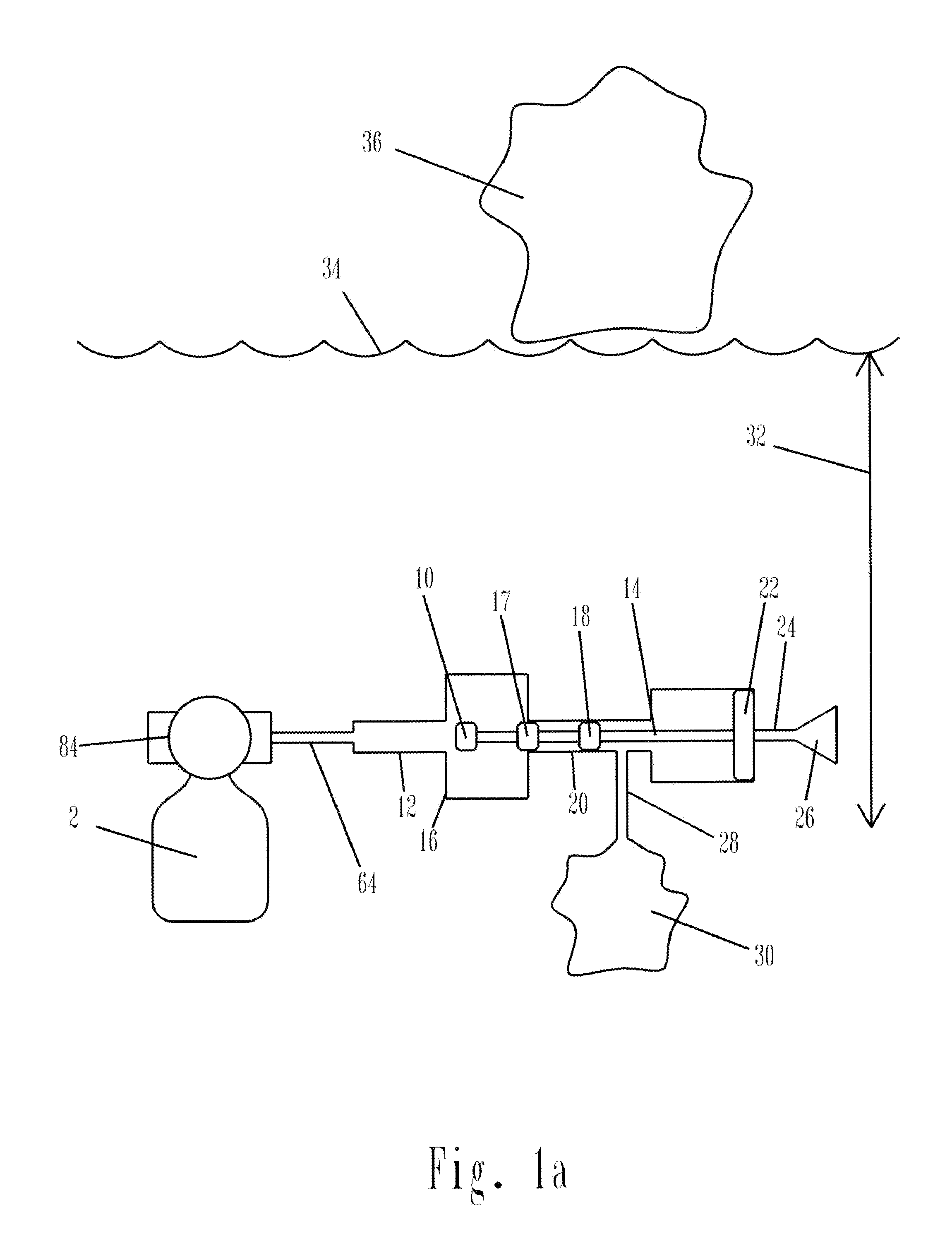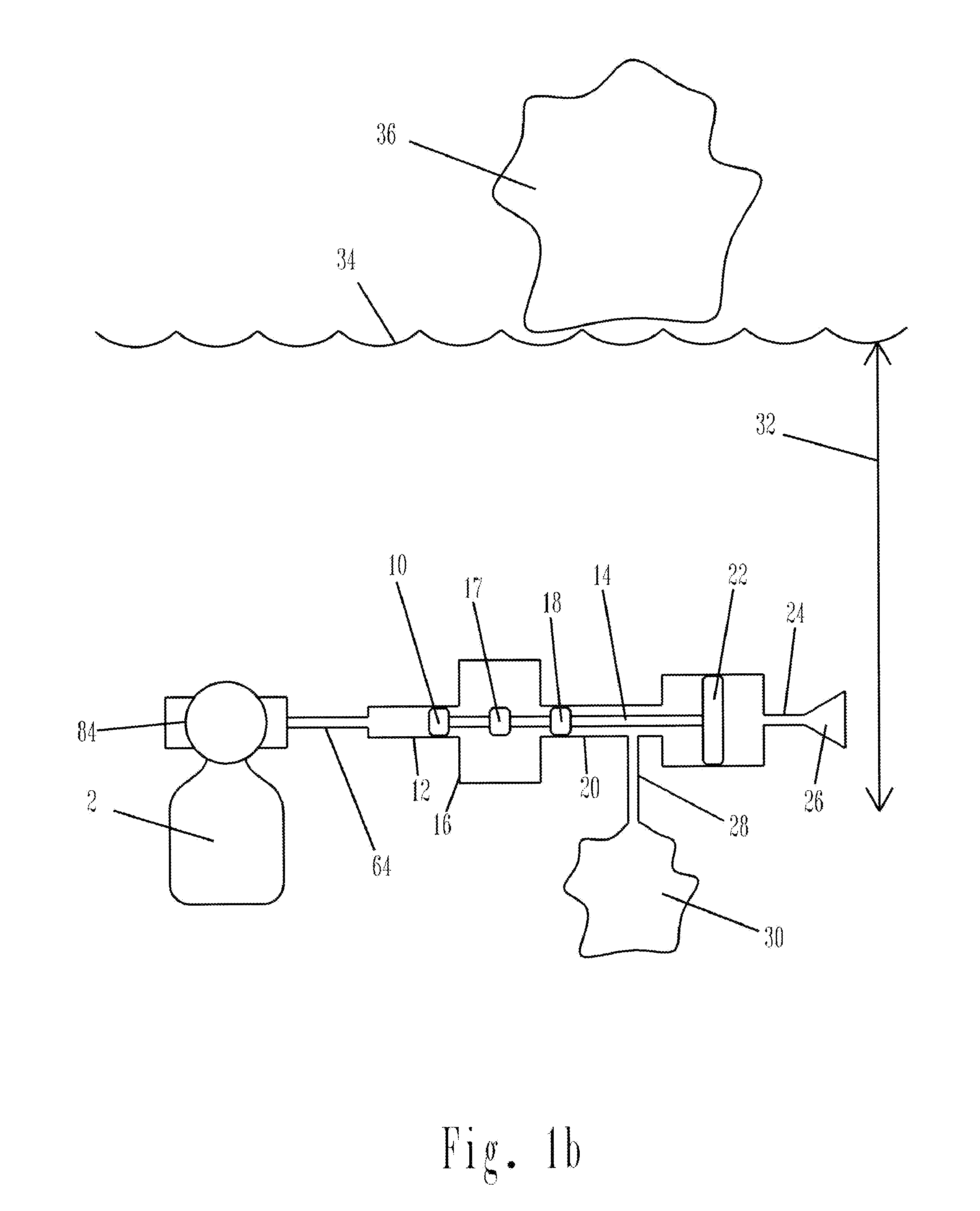Constant mass oxygen addition independent of ambient pressure
a technology of constant mass oxygen and ambient pressure, which is applied in the direction of underwater equipment, operating means/releasing devices of valves, respirators, etc., can solve the problems of increasing the wob required in the loop, limiting the amount of time a diver has available underwater to the amount of gas carried, and bulk and complexity are too much to handl
- Summary
- Abstract
- Description
- Claims
- Application Information
AI Technical Summary
Problems solved by technology
Method used
Image
Examples
Embodiment Construction
[0023]FIGS. 1a, 1b, and 1c show a preferred configuration of a constant mass oxygen addition device which alternately pressurizes with regulated pressure gas containing oxygen to a set value greater than ambient pressure, and subsequently depressurizes to ambient pressure, an intermediate chamber 16, thereby delivering one constant mass dosing cycle of metabolic oxygen.
[0024]Referring to FIG. 1a, stored pressurized gas containing oxygen inside high pressure gas storage bottle 2, is regulated to pressure Preg above surrounding ambient pressure Pamb by pressure regulator 84. In diving applications, it is preferred to use commonly available off the shelf scuba regulators that require no modification for this purpose. Regulated gas piston 10, located fully inside intermediate chamber 16, forms an open, pressurizing isolation valve, that allows regulated pressure gas containing oxygen to flow through connecting tube 64 to fully pressurize regulated piston chamber 12 and intermediate cham...
PUM
 Login to View More
Login to View More Abstract
Description
Claims
Application Information
 Login to View More
Login to View More - R&D
- Intellectual Property
- Life Sciences
- Materials
- Tech Scout
- Unparalleled Data Quality
- Higher Quality Content
- 60% Fewer Hallucinations
Browse by: Latest US Patents, China's latest patents, Technical Efficacy Thesaurus, Application Domain, Technology Topic, Popular Technical Reports.
© 2025 PatSnap. All rights reserved.Legal|Privacy policy|Modern Slavery Act Transparency Statement|Sitemap|About US| Contact US: help@patsnap.com



